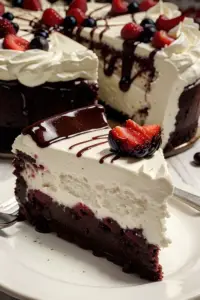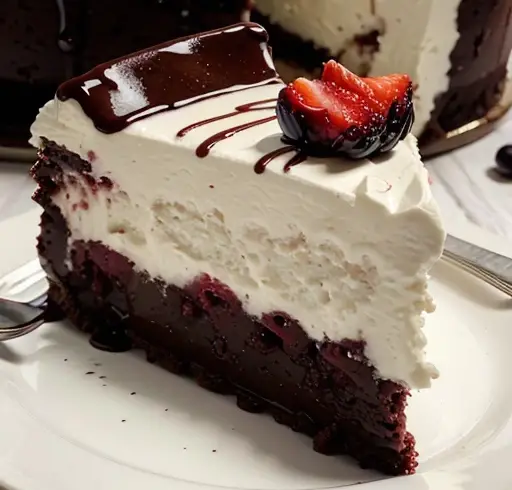There’s something inherently comforting about a perfectly baked pound cake. That dense yet tender crumb, the buttery richness, and the way it fills your kitchen with an aroma that feels like a warm hug. After years of testing and tweaking various recipes, I’ve finally perfected what I consider to be the ultimate vanilla buttermilk pound cake, crowned with a silky cream cheese glaze that takes it from wonderful to absolutely unforgettable.
Why Buttermilk Makes All the Difference
Most traditional pound cake recipes call for regular milk or even no liquid at all beyond the moisture from butter and eggs. But buttermilk? That’s where the magic happens. The slight tanginess cuts through the sweetness, while the acidity tenderizes the gluten, resulting in a cake that’s both flavorful and incredibly moist.
I discovered this secret quite by accident one Sunday afternoon when I was craving pound cake but found myself out of regular milk. That happy accident transformed my baking forever, and I haven’t looked back since.
The buttermilk doesn’t just improve the texture—it creates a perfect canvas for pure vanilla flavor to shine. And shine it does in this recipe, where I don’t hold back on the real vanilla extract (please, I beg you, skip the imitation stuff).
The Science Behind the Perfect Pound Cake
Traditional pound cake got its name from the equal weights of butter, sugar, eggs, and flour that went into the original recipes. While I’ve modified those proportions slightly for the modern palate, understanding the role each ingredient plays helps achieve that perfect slice every time:
- Butter: Provides richness, flavor, and helps create that tight, velvety crumb that defines a good pound cake. Always use unsalted butter at room temperature for the best incorporation.
- Sugar: Beyond sweetness, sugar tenderizes the cake by interfering with gluten development and helps create that slightly crunchy, caramelized exterior that contrasts so beautifully with the tender interior.
- Eggs: They provide structure, moisture, and richness. Allowing them to come to room temperature before mixing ensures better emulsification with the butter.
- Flour: The protein in all-purpose flour gives the cake its structure. Measuring correctly (preferably by weight) and not overmixing once it’s added helps prevent a tough cake.
- Buttermilk: As mentioned, the acidity tenderizes the crumb while adding complexity to the flavor profile.
- Vanilla: Good quality pure vanilla extract enhances all the other flavors while adding its own distinctive warmth.
Mastering the Mixing Method
The mixing method for pound cake isn’t complicated, but it does require attention. The “creaming method” used here—beating butter and sugar until light and fluffy—is essential for incorporating air into the batter, which helps the cake rise and achieves that perfect texture.
I’ve found that patience is key here. Really give the butter and sugar time to cream together—at least 3-5 minutes with an electric mixer. You’re looking for the mixture to become notably lighter in both color and texture. This step alone can make the difference between a dense, heavy cake and one that’s properly textured.
Cream Cheese Glaze: A Perfect Finishing Touch
While a classic pound cake needs no embellishment, this cream cheese glaze elevates it to special-occasion status. The tangy cream cheese echoes the subtle tang of the buttermilk in the cake, creating a harmonious flavor profile that’s sophisticated yet comforting.
The glaze should be thick enough to coat the back of a spoon but fluid enough to drip slowly down the sides of the cake. This consistency allows it to partially absorb into the top of the warm cake while creating those beautiful drips that make the cake so visually appealing.
For the Cake:
- 1½ cups (340g) unsalted butter, at room temperature
- 2½ cups (500g) granulated sugar
- 5 large eggs, at room temperature
- 3 cups (375g) all-purpose flour
- ½ teaspoon baking powder
- ¼ teaspoon baking soda
- ½ teaspoon salt
- 1 cup buttermilk, at room temperature
- 2 tablespoons pure vanilla extract
- 1 vanilla bean, split and seeds scraped (optional but recommended)
Cream Cheese Glaze:
- 4 ounces (115g) cream cheese, softened
- 1 cup (120g) powdered sugar, sifted
- 3-4 tablespoons milk or cream
- 1 teaspoon pure vanilla extract
- Pinch of salt

Pound Cake:
- Preheat your oven to 325°F (165°C). Thoroughly grease and flour a 12-cup bundt pan or two 9×5-inch loaf pans.
- In a medium bowl, whisk together the flour, baking powder, baking soda, and salt. Set aside.
- In the bowl of a stand mixer fitted with the paddle attachment (or using a hand mixer), beat the butter on medium speed until creamy, about 1 minute.
- With the mixer running, gradually add the sugar. Once all sugar is added, increase speed to medium-high and beat until the mixture is very light and fluffy, about 5 minutes. Don’t skimp on this step—it’s crucial for the cake’s texture.
- Add the eggs one at a time, beating well after each addition and scraping down the sides of the bowl as needed. If the mixture looks slightly curdled, don’t worry—it will come together once the flour is added.
- Add the vanilla extract and vanilla bean seeds (if using) and mix until incorporated.
- With the mixer on low speed, add the flour mixture in three parts, alternating with the buttermilk, beginning and ending with the flour mixture. Mix just until combined after each addition. Be careful not to overmix once the flour is added.
- Spoon the batter into the prepared pan(s) and smooth the top with a spatula.
- Bake until a wooden skewer inserted into the center comes out clean or with a few moist crumbs, about 60-70 minutes for a bundt cake or 50-60 minutes for loaf pans.
- Allow the cake to cool in the pan for 15 minutes, then invert onto a wire rack to cool completely before glazing.
For the Cream Cheese Glaze:
- In a medium bowl, beat the softened cream cheese until smooth and free of lumps.
- Add the sifted powdered sugar, 3 tablespoons of milk or cream, vanilla extract, and a pinch of salt. Beat until smooth.
- If the glaze is too thick, add more milk, one teaspoon at a time, until it reaches a pourable but still thick consistency.
- Once the cake has cooled, place it on a serving plate. Pour the glaze over the top, allowing it to drip down the sides naturally.
Tips for Pound Cake Success
After making this recipe countless times over the years, I’ve gathered some insights that help ensure success:
- Ingredient Temperature Matters: Room temperature butter, eggs, and buttermilk incorporate much better than cold ingredients, resulting in a smoother batter and more even texture.
- Don’t Rush the Creaming: This builds the structure for your cake. The butter and sugar mixture should be noticeably lighter in both color and texture before moving on.
- Measure Carefully: Especially for flour, which can easily become compacted. I prefer to weigh ingredients for consistent results.
- Check Your Leavening Agents: Make sure your baking powder and baking soda are fresh. This cake doesn’t rely heavily on chemical leaveners, but they do help achieve the perfect rise.
- The Toothpick Test Can Be Deceiving: For rich, moist cakes like this one, a few moist crumbs on your toothpick are actually preferable to completely dry, which might indicate overbaking.
- Proper Cooling Is Essential: Allow the cake to cool in the pan for exactly the time specified before attempting to remove it. Too short, and it may fall apart; too long, and it might stick.
Variations to Try
While this vanilla buttermilk pound cake is perfect in its classic form, there are several delicious variations worth exploring:
- Lemon Buttermilk Pound Cake: Add the zest of two lemons to the batter and replace the vanilla in the glaze with fresh lemon juice.
- Almond Vanilla Pound Cake: Add ½ teaspoon of almond extract along with the vanilla and sprinkle the glazed cake with toasted sliced almonds.
- Marble Pound Cake: Remove about a third of the batter and mix in 3 tablespoons of cocoa powder. Drop spoonfuls of chocolate batter into the vanilla batter in the pan and swirl gently with a knife.
- Brown Butter Variation: Replace half the butter with browned butter (cooled until solidified but still soft) for a nutty, caramelized flavor that pairs beautifully with the vanilla.
Serving and Storing Your Pound Cake
This vanilla buttermilk pound cake is wonderfully versatile when it comes to serving. For a simple afternoon treat, a slice needs no accompaniment beyond perhaps a cup of coffee or tea. For dessert, try topping a slice with fresh berries and a dollop of whipped cream, or even a scoop of ice cream.
The cake will keep well at room temperature, tightly wrapped or in an airtight container, for up to 3 days. For longer storage, refrigerate for up to a week or freeze slices (well-wrapped) for up to 3 months. If freezing, I suggest doing so before adding the glaze, then glazing after thawing.
A Cake for All Occasions
What I love most about this vanilla buttermilk pound cake is its versatility. It’s elegant enough for special occasions but simple enough for everyday enjoyment. It makes a thoughtful homemade gift, a welcome addition to brunch, or the perfect ending to a dinner party.
There’s something deeply satisfying about mastering a classic recipe like this one—a recipe that doesn’t rely on trendy ingredients or complicated techniques, but rather on quality ingredients and careful attention to detail. This vanilla buttermilk pound cake with cream cheese glaze may not be flashy, but it’s the kind of recipe that becomes a beloved family favorite, passed down through generations and cherished for its simple perfection.
The next time you’re craving something sweet that balances richness with sophistication, give this pound cake a try. I’m confident it will earn a permanent place in your baking repertoire, just as it has in mine.
